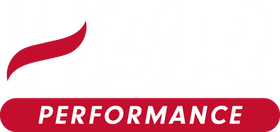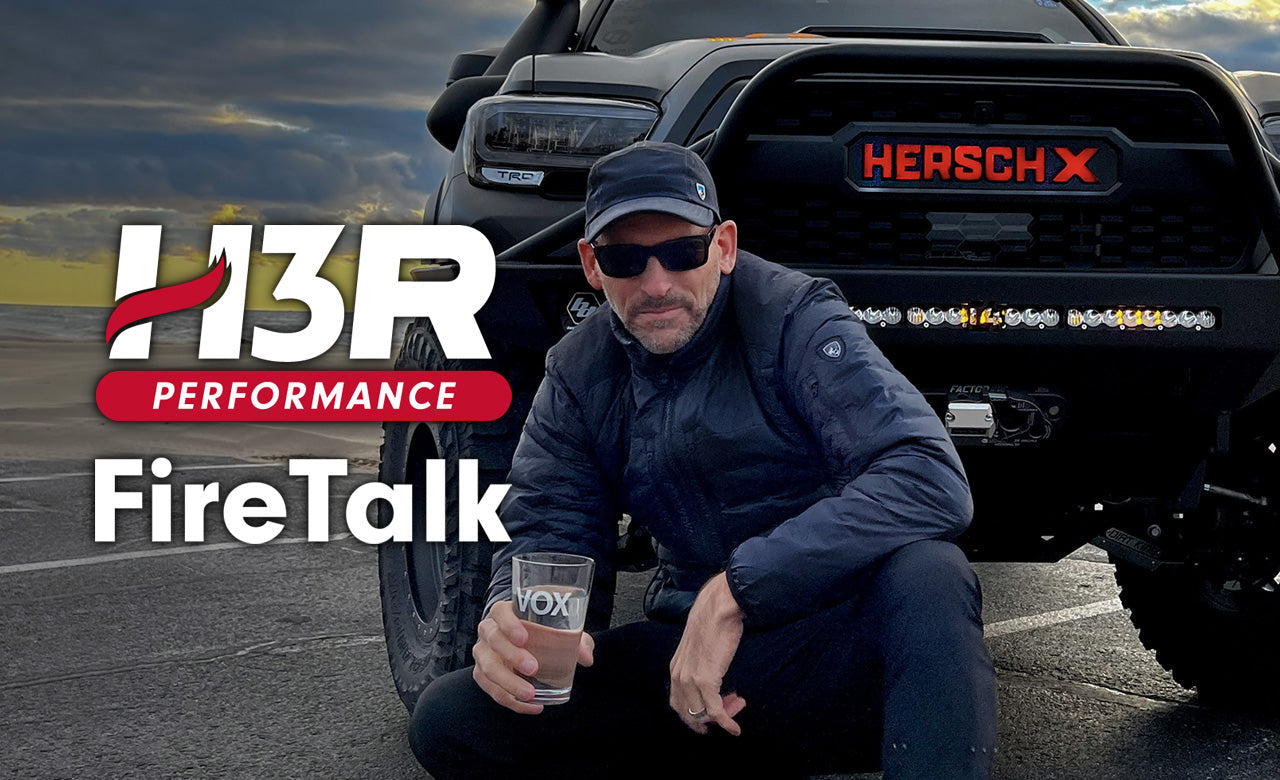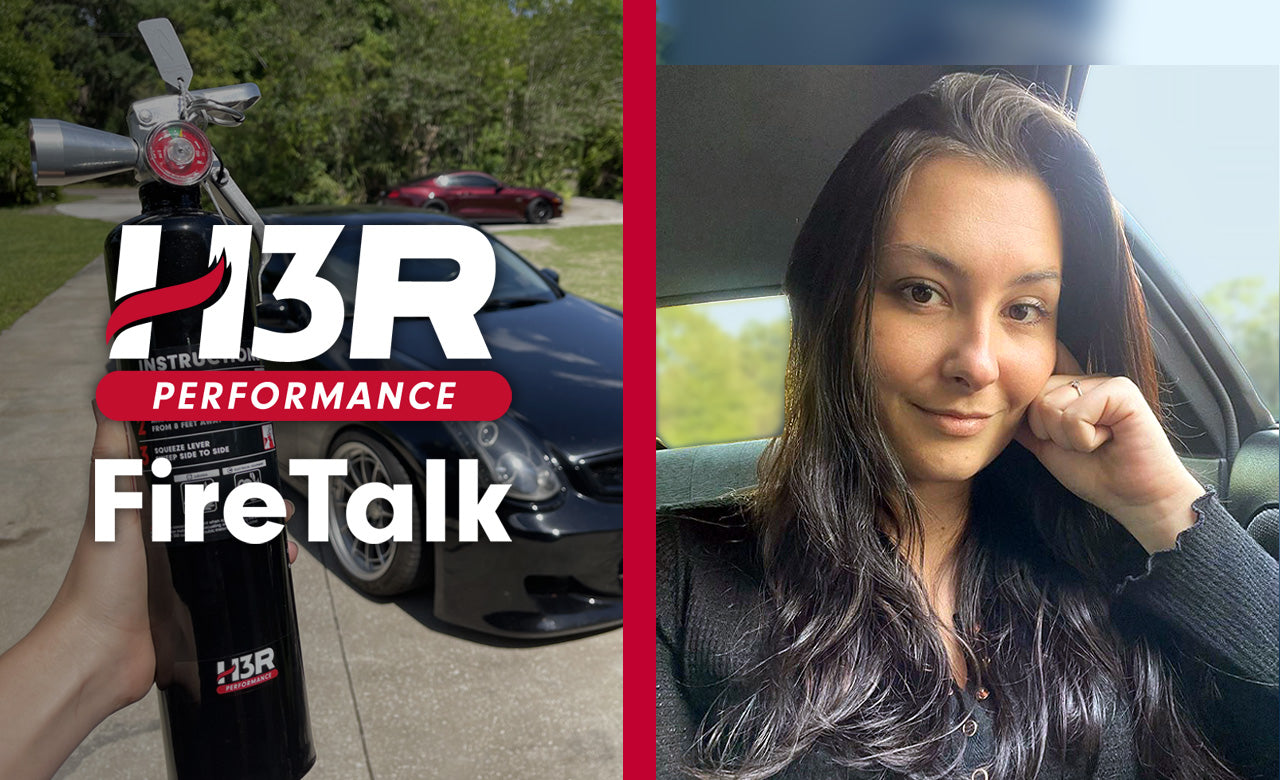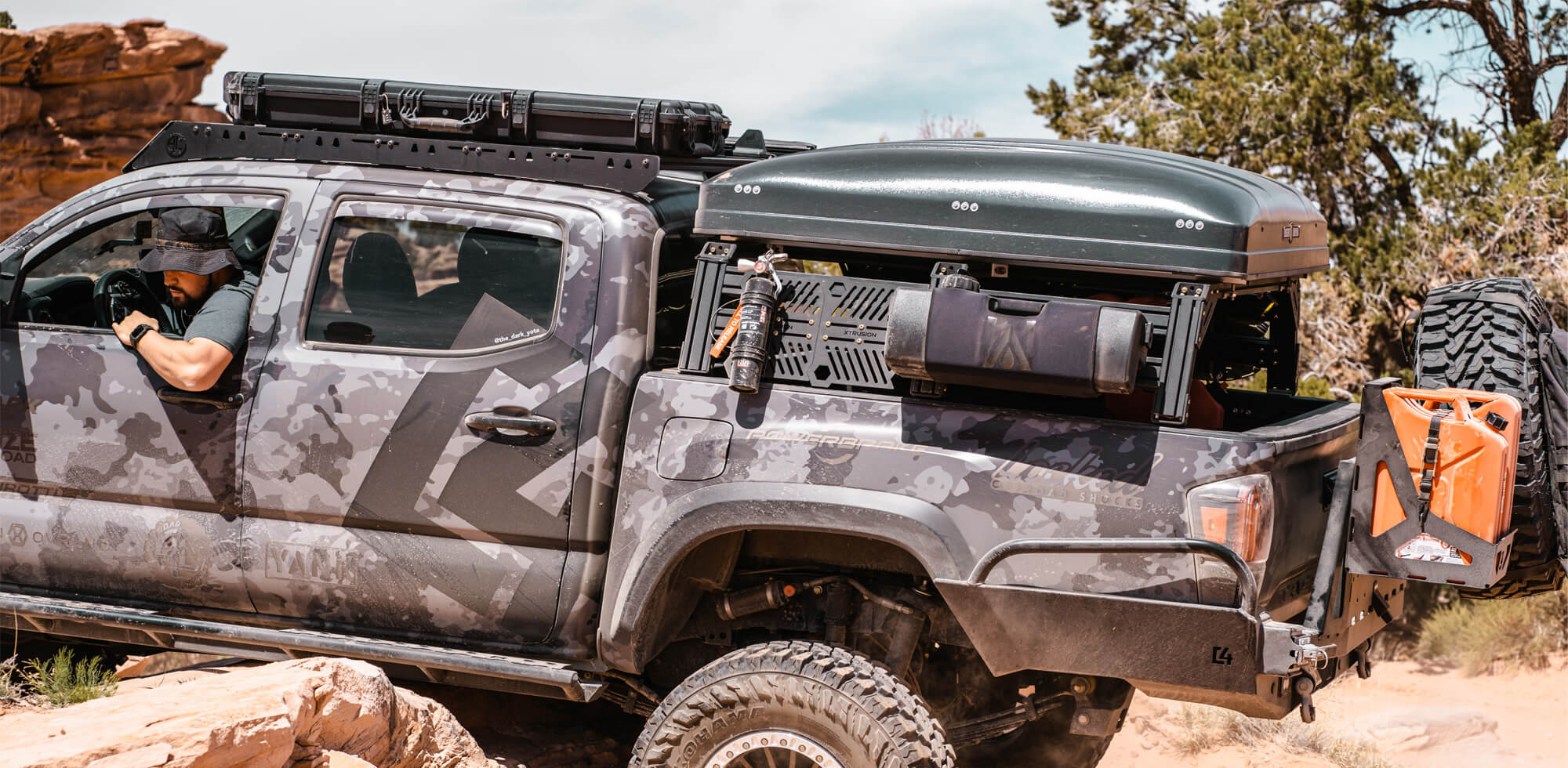In this episode of FireTalk we interview retired Police Sergeant and Volunteer Fire Fighter Mike Nielsen. Mike paid a visit to our warehouse and we got to pick his brain about emergency preparedness, fire safety for vehicles, and take a look at his bugout Jeep Gladiator. We had a great time hanging out with him and learned a lot about how to be ready for an emergency, particularly when you live in an area prone to wildfires or other natural disasters.
Teresa:
Hey everyone, welcome to FireTalk. We are very excited to have Mike Nielsen here with us today. How are you doing?
Mike:
Doing great happy to be here.
Teresa:
Yeah, we're happy to have you here, so Mike has a very interesting work history in law enforcement and firefighting, so tell us a little bit about that.
Mike:
So I am one of the people who believe life is not a spectator sport. I spent 27 years in law enforcement and during my time in law enforcement, I also spent time as a volunteer firefighter. Additionally, I worked with the Silver Air Patrol in Search and Rescue as that extra layer. If I'm curious about something on how to get involved and help I go down that path.
I retired as a Sergeant with the City of Sebastopol in 2017, was a Sergeant for a little over 11 years running their firearms program and their field training program. And for example, in my time with the City of Sebastopol, I responded to a house fire where I got to a certain point where I couldn't go any further, there was someone trapped inside, based on my safety equipment. I didn't want to be a spectator, but once the fire rolled unseen I had to have the safety equipment to get involved and help out. I am not a spectator, so at that point that's why I went to the Fire Chief and went down the route of Volunteer Fire. Dual rolling with fire and police with the City of Sebastopol. 
Teresa:
So you were motivated by that experience to get more involved with firefighting.
Mike:
Yes, if I see a problem and I can help I want to help. If I couldn't help I want to find out why and solve that problem, which is what got me down the path of firefighting. Plus, it's an adrenaline rush, it is a lot of fun. You can't fake firefighting either you can do it or you can't.
Teresa:
Right? That makes sense, so outside of your job you clearly have a very cool (Jeep.) We are in front of his Jeep gladiator here. So tell us a little bit about this Jeep, what got you into this?
Mike:
So again, part of it is preparedness and part of it is fun. So I wanted a vehicle that first off, needed to be a pickup. It's my daily driver, so just going doing dump runs, picking up stuff at Home Depot, it has to be a pick up. Before this I had a Toyota Tacoma which is a great vehicle. However, this here for what I wanted to do to my Tacoma, this comes ready to go not modifying anything. It’s a 2020 Jeep gladiator and I chose this as it hits the pickup box for daily driver and house stuff, as well as the capability of both fun and rescue.
So it has been outfitted with everything from any disaster. You want to be prepared for losing resources of police, fire, and EMS (Emergency Medical Services). For those who don't know, when we had our Tubbs fire we actually evacuated entire towns. So we had a loss of response from police, fire, and EMS. So the ability to have (your own) EMS on the vehicle while you're just having fun, but if you need to evacuate you have that with you. In this vehicle, I have covered safety tools including medical supplies from left to right. It would be your standard your friend-trip or you-trip type Band-aids, gauze, your everyday. 99% of the time that's all you're ever going to need. But left to right in the back my vehicle goes all the way to tourniquets, occlusive/non-occlusive dressings, just again for worst-case scenario for that standard care depending on where you are. And then the same thing with extinguishers. I have both the HalGuard and MaxOut depending on the situation. The clean agent (HalGuard) for both defense of my vehicle as well as the Dry Chem (MaxOut) for secondary vehicles. Or if you're camping, having the ability to just take the extinguisher with you versus “where is it?” It's always ready to go.
Teresa:
Excellent yeah, that is something we've talked about a lot on FireTalk is mounting it where you can reach it so you're not wasting time trying to find it, which is great.
So yeah, it seems like you've taken all your experience in emergency response and made a vehicle that allows you to sort of handle these things on your own in an emergency, which is great. We did a really cool walk around with Mike that we're going to put up in a separate video and go over all this sort of stuff he has in here and why. So keep an eye out for that.
But moving on back to what's in it, you have our extinguishers. What made you reach out to us for your fire extinguishers?
Mike:
So the main thing is you can skimp on a lot of things in life, like getting the cheaper paper towels or the cheaper toilet paper. But for life-saving tools, when you need it, it cannot fail. So (not) the disposable signatures, the cheap, inexpensive, one-and-done extinguishers. The main thing for me is to get an extinguisher that is rechargeable, it's designed for higher pressure, and reuse. So (first) quality extinguisher, and this second after that, once you find extinguishers you have the HalGuard system, the clean agent, which I love using similar system in my career on high pressure gas fires, they're awesome, so having that in here from one vehicle.
And then the ability to have a secondary dry chem so you have both extinguishers, clean agent, and the dry chem.
And after that is mounting. How can I mount it in the vehicle. Under adrenaline, your gross motor skills go away now. The more you train, the more you can reduce kind of muscle memory of where to get your equipment. However, with H3R you have the mounting brackets that have the large, really bright red handle where you just walk in the vehicle, pop it and you have the extinguisher. Put it back, lock it in. You want it stupid simple when things go bad you are under adrenaline. Yeah I need to get to that I need. To get it out. One pull and I'm ready to go. 
Teresa:
Yeah, that's why we love the ProLock, it’s great for that. Excellent, so in terms of people thinking about fire safety in their vehicle, other than having the extinguisher, from your experience is there anything else you would recommend people do to be ready?
Mike:
First of all, make sure your vehicle is operational. I wash my Jeep at least once a month, probably twice a month. At that time, you're popping the hood and you're looking inside. You're looking for leaks, suspension oil, plugs, all of that so you aren't affecting your vehicle. If your vehicle isn't maintained, you can't get anywhere. So whatever you drive, live within your means, not everyone can go out and get a Jeep Gladiator. But whatever you think you have, just make sure it's maintained.
Then once you have that it’s basic safety supplies ready to go. Get an extinguisher. Maybe you can't get a HalGuard so get the dry chem (MaxOut.) So it's just having the ability to live within your means, but you're investing in your life. This is not something you skimp on. If you have a horrible paper towel that rips right? You can go over that. Whereas if you have an extinguisher that you grab it and its no longer charged, you now are going to either lose your whole vehicle, because that small fire is now a big fire. Or it could be a life-saving situation where you lose your house or whatever because you went the cheaper route. So lifesaving tools, that's where you don't skimp on, other stuff I might get the cheaper version.
Teresa:
Yeah, yeah makes sense. Curious what's next? Is there anything else you're going to be adding or anything? What's next for you?
Mike:
It's fine-tuning, so I've done a lot with JCR, they make great things for Gladiator, I have the molle panels in the back for the extinguishers. The cage underneath for both securing equipment. Inside the front, I have an American Adventure Labs overhead molle. That's going to have my communications head.
So communication, so the idea of being able to talk. I’m not sure if it was in this video, but talking about communications, if you need to evacuate with your family and you're in multiple vehicles, cell phone towers often get overwhelmed quickly with communications and lock up. Or in our case, (during the Tubbs fire) they burned down and they weren't there. So a simple FRS radio. Beyond that, you can go to GMRS which takes just FCC licensing, which is now down to $35 for 10 years, and a couple of portables. You get inexpensive portals for $20 and you can maintain that communication. I would not count on your cell phone during a major disaster just because they're going to get overwhelmed or be out of commission during a flood or fire.
Teresa:
That's a good point. Pay attention guys! Thanks so much for coming out. Your community is very lucky to have you.
Mike:
Well, thank you for offering me the invitation.
Teresa:
Yeah! All right guys, bye!






